Regular, thorough deep cleaning is crucial in high-traffic public areas like train stations, retail districts, and schools to prevent dirt buildup and infection spread. This involves removing dust, grime, and debris from hard-to-reach areas, scrubbing floors, and disinfecting frequently touched surfaces. Essential tools include powerful vacuum cleaners, microfiber cloths, mops, and specialized cleaning solutions for optimal results. Special attention should be given to high-touch surfaces like doorknobs and light switches, using appropriate cleaning solutions and UV sanitizing wands. In dense traffic zones, disinfection of air and surfaces is also vital. Efficient deep cleaning involves task organization, priority setting, color-coded tool designation, and effective communication among cleaners. Natural, plant-based cleaning solutions offer safe alternatives to harsh chemicals. Strategic planning, including off-peak scheduling and rotational cleaning, ensures sparkling, hygienic spaces and prolongs the lifespan of cleaning supplies.
Deep cleaning heavy traffic areas is essential for maintaining hygiene, safety, and a pleasant environment. This article delves into the intricacies of deep cleaning, offering practical insights and strategies tailored to high-traffic zones. From identifying common spots like entrance ways and handrails to optimizing cleaning routines, we explore effective tools, techniques, and natural solutions. Learn how regular deep cleaning minimizes germ spread, enhances safety, and contributes to a healthier, more welcoming space.
Understanding Heavy Traffic Areas: Common Spots and Their Challenges
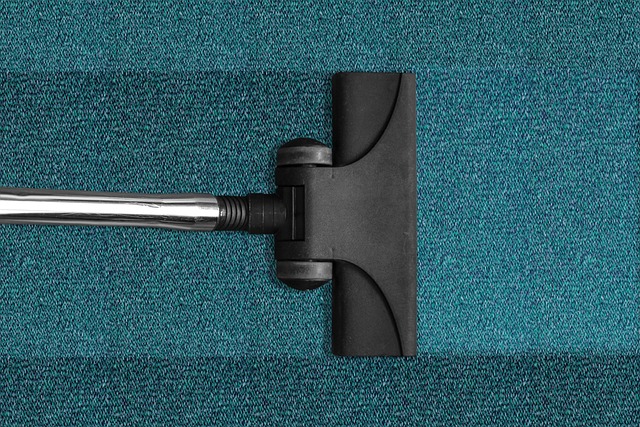
Heavy traffic areas are spaces that see a constant influx of people, creating unique challenges for maintenance and cleanliness. Public transportation hubs like train stations and bus stops often fall into this category, as do busy retail districts, office buildings, and schools. These locations face the dual challenge of regular, sometimes messy, foot traffic and the accumulation of various types of debris, from food crumbs to discarded items.
Deep cleaning these areas is essential for maintaining a hygienic environment. High-traffic spots require more frequent and thorough cleaning than less-trafficked spaces due to the potential for faster dirt and grime buildup. Pay special attention to often-overlooked surfaces like handrails, doorknobs, and floor seams where dirt can hide, requiring specific cleaning techniques and products to ensure a sanitary space for all visitors.
The Importance of Regular Deep Cleaning for Hygiene and Safety

Regular deep cleaning is paramount in heavy traffic areas for maintaining hygiene and ensuring safety. Public spaces like shopping centers, schools, and hospitals see a constant influx of people, leading to rapid accumulation of dirt, germs, and allergens. Without thorough deep cleaning routines, these surfaces can become breeding grounds for bacteria and viruses, posing significant health risks.
Deep cleaning goes beyond surface-level sanitization. It involves removing settled dust, grime, and debris from hard-to-reach areas, scrubbing floors, and disinfecting frequently touched surfaces. This rigorous process not only enhances aesthetics but also plays a critical role in preventing the spread of infectious diseases. Regular deep cleaning contributes to creating an environment that is safe for all users, promoting well-being and peace of mind.
Essential Tools and Equipment for Effective Deep Cleaning
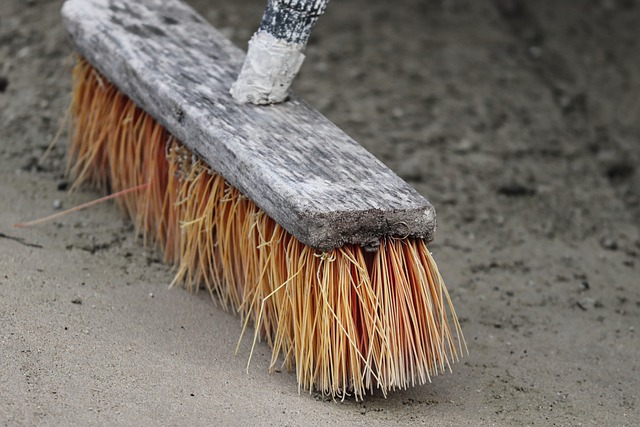
When it comes to deep cleaning heavy traffic areas, the right tools and equipment are essential for achieving exceptional results. A well-stocked cleaning caddy is a must for any thorough deep clean. Start with a reliable vacuum cleaner designed to handle high-traffic spaces; look for models with strong suction and diverse attachments to tackle various surfaces.
Don’t underestimate the power of microfiber cloths, mops, and sponges. These tools are versatile and effective at capturing dust, dirt, and grime. Additionally, invest in a good quality cleaning solution suitable for hard floors or carpets, depending on your area of focus. Consider an all-purpose cleaner or specialized products tailored to specific types of surfaces like tile, vinyl, or wood.
Step-by-Step Guide: Deep Cleaning High-Touch Surfaces

Deep Cleaning High-Touch Surfaces: A Step-by-Step Guide
Begin by gathering all necessary supplies, including high-quality cleaning solutions suitable for the surface type. For kitchens and bathrooms, consider a mixture of mild disinfectants, vinegar, and water. Always test a small, inconspicuous area first to ensure the solution won’t damage or discolor the surface. Next, clear the area of any debris or clutter, ensuring easy access to every corner and crevice. Start with hard, non-porous surfaces like countertops, sink fixtures, and doorknobs using a microfiber cloth dampened in your cleaning solution. Scrub thoroughly, paying close attention to high-contact areas where germs thrive. For added disinfection, consider using a UV sanitizing wand after cleaning. Repeat the process for all high-touch surfaces, including light switches, remote controls, and tables. Remember, thorough drying is essential to prevent water spots and promote a streak-free finish.
Strategies for Managing Dirty Floors in High-Traffic Zones

In high-traffic zones, such as entrance halls, common areas in offices or schools, and retail stores, regular deep cleaning is essential to maintain a hygienic environment. Implementing effective strategies for managing dirty floors requires a combination of proactive measures and robust cleaning techniques. One crucial step is to establish a scheduled cleaning routine that goes beyond daily surface wiping. This includes mopping with appropriate cleaning solutions and utilizing floor scrubbers or buffers to eliminate embedded dirt and grime.
Additionally, placing doormats at entrances can significantly reduce the amount of tracked-in dirt and debris. Encouraging patrons, employees, or students to remove their shoes can also be a game-changer. Providing shoe covers or using boot scrubbers near entrances ensures that most contaminants are captured before they spread across floors. Regular deep cleaning sessions, combined with these strategies, will help keep high-traffic areas pristine, ensuring a comfortable and safe space for everyone.
Disinfecting Air and Surfaces to Prevent Germ Spread
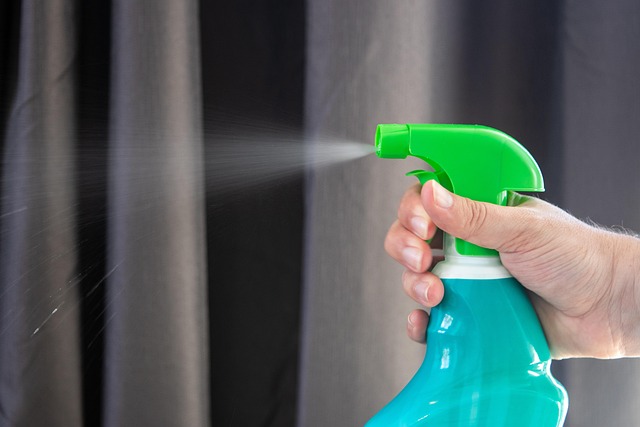
In heavy traffic areas, proper deep cleaning goes beyond surface level sanitation. Disinfecting air and surfaces is a crucial step in preventing the spread of germs and bacteria. Since these spaces see constant foot traffic, invisible pathogens can linger on frequently touched surfaces like doorknobs, light switches, and countertops. A thorough deep clean involves using effective disinfectants to kill these germs, ensuring a healthier environment for everyone.
Air disinfection is equally vital. Ventilation systems and air purification devices play a key role in filtering out airborne contaminants. Regular cleaning and replacement of air filters can significantly reduce the presence of viruses, bacteria, and other microscopic particles. This measure not only contributes to better indoor air quality but also acts as a preventive measure against the proliferation of diseases, making heavy traffic areas safer for all users.
Tips for Maintaining Order and Efficiency During the Cleaning Process

Maintaining order and efficiency during deep cleaning is essential for high-traffic areas to ensure a swift and thorough transformation. One key tip is to organize and prioritize cleaning tasks, focusing on high-contact surfaces first. This strategic approach ensures that frequently touched areas like doorknobs, light switches, and countertops receive the most attention. By breaking down the process into manageable steps, cleaners can avoid wasting time and resources.
Designating specific cleaning tools and supplies for different zones helps streamline the process. Using color-coded buckets or bins for various solutions allows for quick identification of areas requiring different care. This system prevents mix-ups and ensures that each area receives the suitable cleaning treatment. Effective communication among cleaners is also vital; clear instructions and regular updates ensure everyone stays on task, promoting a productive and well-coordinated deep cleaning experience.
Incorporating Natural Cleaning Solutions for a Greener Approach
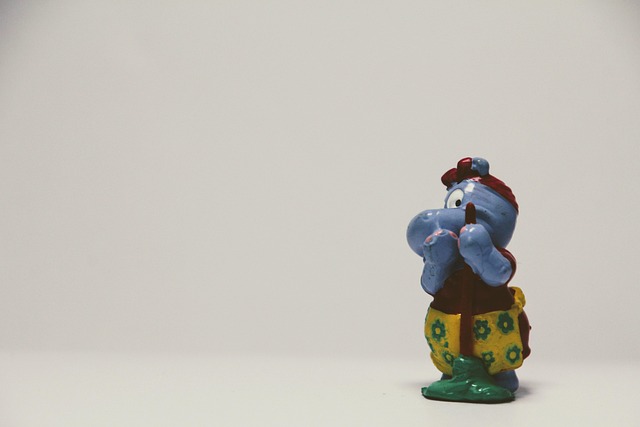
In the quest for comprehensive deep cleaning, especially in high-traffic areas, opting for natural cleaning solutions is a sustainable and eco-friendly approach worth considering. Traditional cleaning products often contain harsh chemicals that can leave behind residuals and contribute to environmental pollution. By switching to natural alternatives, you not only reduce your carbon footprint but also create a safer and healthier environment for both occupants and the planet.
Plant-based detergents, essential oils, and vinegar are powerful allies in deep cleaning. For instance, white vinegar is an excellent disinfectant and deodorizer, while baking soda acts as a gentle abrasive. Essential oils like tea tree oil possess antimicrobial properties, adding a fresh scent without the need for synthetic fragrances. Incorporating these natural solutions not only simplifies your cleaning routine but also ensures that your spaces are free from toxic chemicals, making them ideal for regular deep cleaning routines in heavy traffic areas.
Scheduling and Optimizing Deep Cleaning Rituals for Maximum Impact
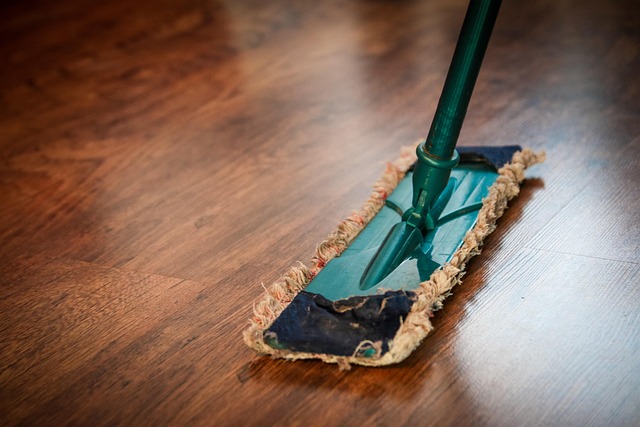
Deep cleaning heavy traffic areas requires a strategic approach to ensure maximum impact and efficiency. Optimize your cleaning rituals by scheduling them during off-peak hours when footfall is lower, allowing for more concentrated and thorough cleaning sessions. This not only enhances the overall cleanliness but also extends the lifespan of cleaning supplies and equipment. Consider implementing a rotational cleaning schedule, focusing on different zones each day or week to maintain a consistent yet varied approach.
Additionally, investing in quality tools and products specifically designed for deep cleaning is essential. Microfiber cloths, powerful vacuum cleaners, and specialized cleaning solutions can make all the difference in removing stubborn stains and grime efficiently. Regularly reviewing and updating your cleaning techniques based on feedback and performance data will help you continually improve the process, ensuring your heavy traffic areas remain sparkling and hygienic.
